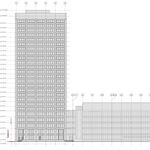I agree with your point, but I think the reason for the disconnect is that induced demand is useful to talk about in the way you address when you simply look at the scope of a single transportation route. Both the 'demand' and its 'induction' are inputs/outputs of a decision to improve a transport route; the demand for x, in this case land/real estate is everpresent in a city:
Basically, people will live wherever is cheapest relative to the distance to work, and associated time/monetary costs to get there. Here's how I see it: so with the 401, people locate near it because it is the means by which they can have that specific, desired proximity to their job. In this case, that means driving. We have not 'induced' demand out of thin air, rather we have created automobile demand, ie traffic because to utilize this means of transport people must drive. Likewise, a compelling transit option, say the Lakeshore West Line, is more time-competitive than all the other options for someone in Oakville. Hence, they gravitate to the train. Similarly, those who are "driving until they qualify" basically are sacrificing that kind of time/proximity for something they can afford, either because they have to or would prefer the commute alongside a nicer place. People won't bring up that demand is everpresent in these conversations because usually its limited in scope. But the reality is we are simply dictating what form our future growth will have. If I looked just at the 401 and the land use that induced, then yeah I would call it induced demand- but these people were always going to live somewhere in Toronto, it was just a matter of where and how they'd get downtown.
Getting away from the point here, people probably would live in Cambridge and drive to Toronto if the 401 was clear, but the only time in history that was possible, people weren't really willing to commute an hour into Toronto just yet. Obviously being forced further from the city is a self-perpetuating cycle, because by building a piece of infrastructure you dictate the type of built form you will have ("induced demand") and guarantee that at some point your system will be overloaded and need expansion. Obviously, you can try and brute-force plan your way around this, by being very strict with land use, but as of right now all we are doing is increasing the density requirements of subdivisions, not changing their structure per se- we are just cramming more car dependency into a smaller space.





